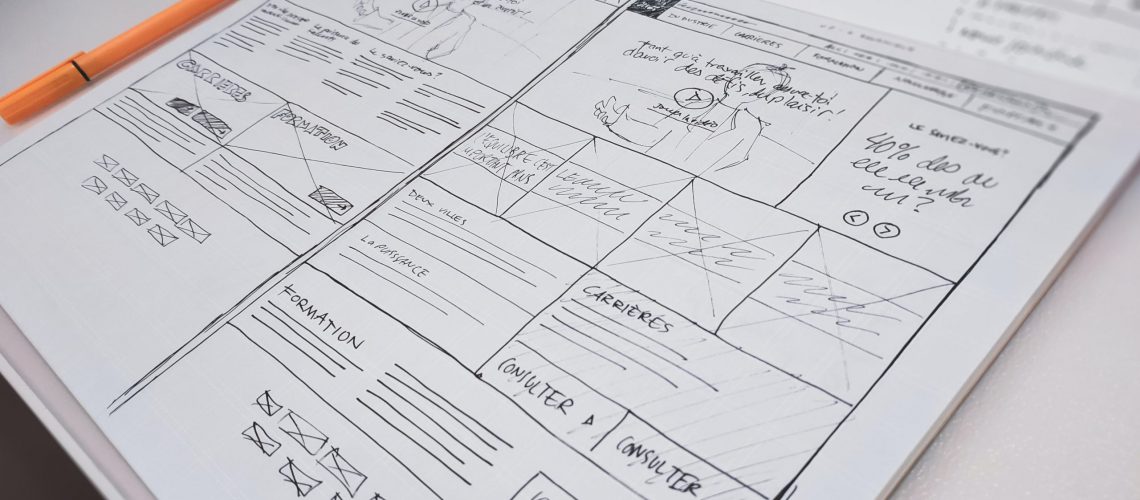So many small business owners spend thousands of dollars designing a website, only to realize it isn’t doing what they’d hoped it would. It isn’t generating more traffic or increasing their rankings in the search results. And it certainly isn’t winning them any more customers. Why? Because they designed their website as an online brochure. We can’t even tell you how many websites we’ve seen that have made this mistake. While there may have been a time when your website was just an online brochure, things have changed. Google is smarter now, and it knows which pages deserve to rank high in the search results and which ones don’t.
In this post, we take a look at some common mistakes people make when designing and writing content for their website. Then, we’ll explain how you can fix these mistakes by focusing on your audience.
Estimated reading time: 4 minutes
Common mistakes on brochure-style websites
Hundreds of companies make the same mistakes when designing their website and writing their online copy. They:
- Make it all about them, and not about the customer
- Use insider language their visitors don’t understand
- Include way too much text that no one will ever read
- Overwhelm their clients with too much information
- Don’t educate, engage with, or encourage action from their audience
The reason so many companies make these mistakes on their websites is because they aren’t looking at their site the way their customers do. They design the website like an online brochure, talking all about their company, what they do, and the benefits that come from working with them. While this seems pretty logical to us as business people, it’s not what your customers want. Your clients have a problem and are looking for a solution to that problem. And they don’t have time to sit down and read endless amounts of text. You have only a few moments to capture their attention and give them what they’re looking for. If you miss that opportunity, they will leave and most likely never come back.
Your website should intrigue visitors, make them curious about your products/services, and help them solve their problems. Quickly. That’s why it’s important to put the right words on your website, in the right places.
Putting the right words on your website
Doing business today pretty much requires an autonomous website. A Facebook or Instagram Business page or an “unplugged” business just won’t cut it anymore. And just slapping a brochure website out onto the internet without thinking about the customer won’t cut it either. If you don’t design your site properly, you won’t increase your rankings in the search engines, drive traffic to your site, or win new customers.
Within five seconds of your homepage loading in a browser, your online copy should answer the three questions your customers are always asking:
- What do you offer?
- How does it make my life better?
- How do I get it?
To find out if your website does this well, consider showing your homepage to a handful of people outside your company. Show them the three questions, and then ask them to answer them after looking at your homepage for only five seconds. If they take too long to answer you, or if they answer incorrectly, then you know you have some changes to make.
Tips to keep in mind
As you start to think about improvements to your website wireframe and your online copy, try to remember these key things:
- People don’t read websites. They scan them.
The less text, the better. Whatever text you do have should use your keywords and clearly communicate how you can solve your customer’s problem. - Minimize distractions.
Automatic videos, sliders, and ads annoy visitors and often cause people to leave your website. Avoid them. When visitors leave your site without doing anything, this increases your bounce rate, which can harm your SEO if you aren’t careful. Keep your pages focused. - Use relevant images.
Pictures are worth 1,000 words. Illustrate your services wherever possible, and use images that are relevant to your business. - Reinforce your offer throughout your website.
It may seem like overkill to repeat the same things over and over. But remember that not everyone lands on the same page of your site when they come from Google. No matter which page your customer lands on, they should be able to find out what you offer and how you can help them within a few clicks.
Your website is not a brochure!
All of that unnecessary brochure-like text on your website will not help you. If anything, it will hurt your rankings in the search engines and your chances at winning new customers.
When customers visit your website, think of it like a “speed date”. You only have so much time to convince them, so choose your words wisely! Moreover, make sure your visitors can find out what you offer, how it improves their life, and how they can get it – all within five or six seconds. Repeat this message throughout your website and use great images.
Above all, keep it simple. Your customers will only give you so much of their time before they turn around to leave. So make it worth their while, and convince them to stick around!
Keep Reading: How To Optimize Your Homepage For SEO

